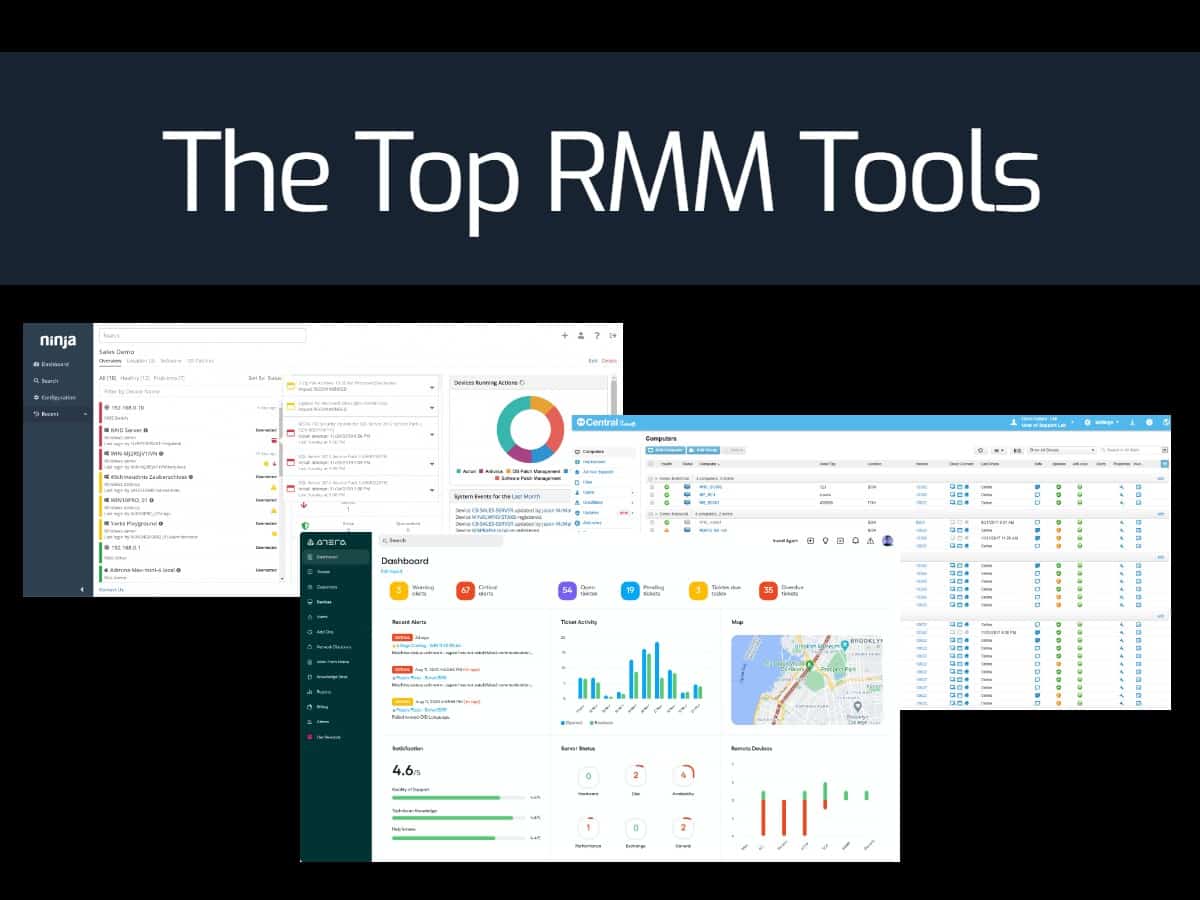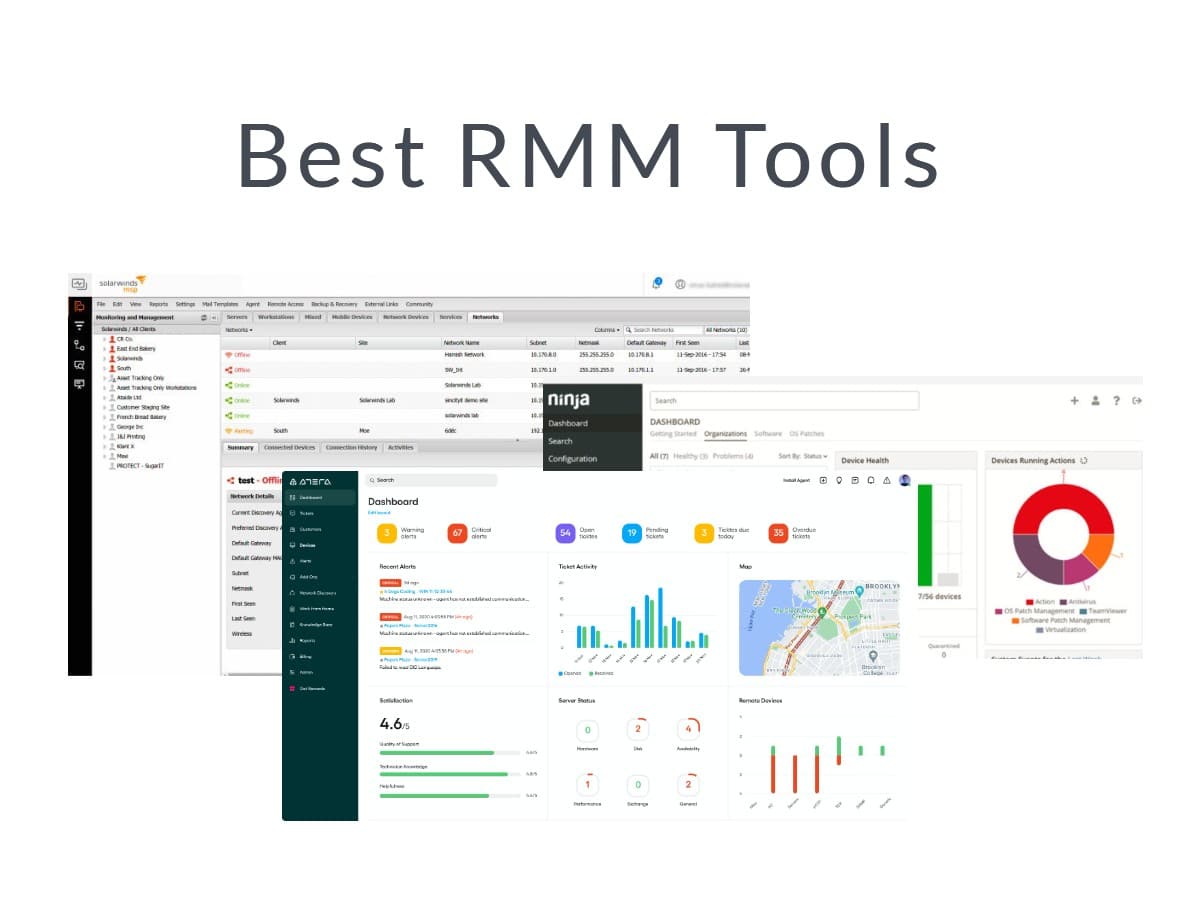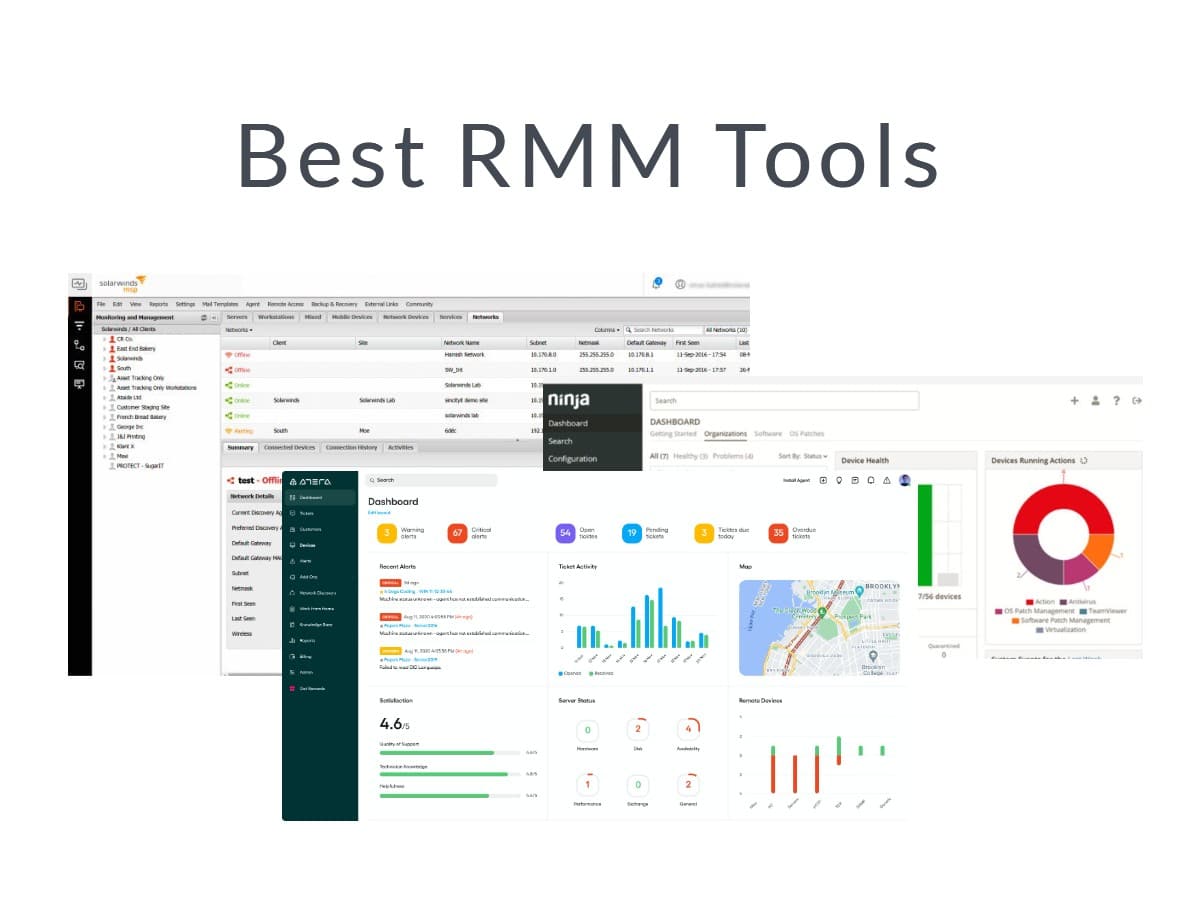Best RMM tools are a game-changer for businesses seeking to simplify and optimize their IT operations. These powerful solutions empower organizations to manage their IT infrastructure efficiently, ensuring smooth operations, enhanced security, and reduced downtime. From remote access and patch management to endpoint security and comprehensive reporting, RMM tools offer a wide range of capabilities that cater to diverse IT needs.
Table of Contents
The right RMM tool can be a valuable asset for any organization, regardless of size or industry. By centralizing IT management tasks, automating routine processes, and providing real-time insights, RMM solutions enable IT professionals to focus on strategic initiatives and proactively address potential issues before they escalate.
What is RMM?

RMM, or Remote Monitoring and Management, is a powerful suite of tools that allows IT professionals to manage and monitor their clients’ computer systems remotely. RMM solutions provide a centralized platform for managing endpoints, ensuring their security, and optimizing performance.
RMM tools are essential for businesses of all sizes, especially those with a distributed workforce or a large number of devices to manage. They streamline IT operations, enhance security, and improve overall system performance.
Benefits of using RMM tools
The benefits of using RMM tools are numerous, including:
- Improved security: RMM tools can help businesses proactively identify and mitigate security risks, such as malware infections, unauthorized access, and data breaches. They can automatically patch vulnerabilities, enforce security policies, and monitor for suspicious activity.
- Increased efficiency: RMM tools automate many IT tasks, freeing up IT professionals to focus on more strategic initiatives. They can also help to reduce downtime and resolve issues more quickly.
- Reduced costs: RMM tools can help businesses save money by reducing the need for on-site support, minimizing downtime, and improving overall system performance.
- Enhanced visibility: RMM tools provide a comprehensive view of all managed devices, allowing IT professionals to monitor system performance, identify potential problems, and make informed decisions.
- Improved compliance: RMM tools can help businesses meet regulatory compliance requirements by automating tasks such as patch management, data backup, and security audits.
Key features of a comprehensive RMM solution
A comprehensive RMM solution should include a wide range of features to address the diverse needs of IT professionals. These features can be broadly categorized as:
- Endpoint management: This includes features for managing software updates, deploying applications, and configuring devices.
- Security monitoring: RMM tools should include features for detecting and responding to security threats, such as malware infections, unauthorized access, and data breaches.
- Performance monitoring: RMM tools should provide real-time insights into system performance, including CPU utilization, memory usage, and disk space. They can also help to identify and resolve performance bottlenecks.
- Remote control: RMM tools allow IT professionals to remotely access and control managed devices, enabling them to troubleshoot issues and provide technical support.
- Reporting and analytics: RMM tools should generate comprehensive reports on system performance, security status, and other key metrics. These reports can be used to track progress, identify trends, and make informed decisions.
Key Considerations When Choosing an RMM Tool

Selecting the right RMM tool is crucial for any organization seeking to streamline IT management, improve security, and enhance efficiency. With numerous options available, making the right choice requires careful consideration of several key factors.
Factors to Consider
Choosing the right RMM tool involves evaluating various aspects, including:
- Features and Functionality: The tool should offer a comprehensive set of features that meet your specific needs, such as remote access, patch management, endpoint security, software deployment, and reporting. Consider whether you require advanced features like scripting, automation, or integration with other IT tools.
- Pricing and Licensing: Evaluate different pricing models, such as per-device, per-technician, or tiered plans. Consider the total cost of ownership, including initial setup, ongoing subscription fees, and potential support costs.
- Ease of Use and Interface: The tool should be user-friendly and intuitive, with a clear and easy-to-navigate interface. This is especially important for teams with varying levels of technical expertise.
- Scalability and Flexibility: Choose a tool that can grow with your business needs. It should be able to handle increasing numbers of devices and users without compromising performance.
- Security and Compliance: Ensure the RMM tool adheres to industry standards and regulations, providing robust security measures to protect sensitive data and meet compliance requirements.
- Support and Documentation: Consider the level of support offered by the vendor, including response times, knowledge base access, and training resources. Adequate documentation and tutorials can greatly simplify implementation and ongoing use.
- Integration with Other Tools: Evaluate the tool’s ability to integrate with other IT systems you use, such as ticketing systems, monitoring tools, or cloud platforms. Seamless integration can streamline workflows and improve efficiency.
RMM Tool Comparison
To help you make an informed decision, here’s a table comparing some popular RMM tools based on features, pricing, and user reviews:
| Tool | Features | Pricing | User Reviews |
|---|---|---|---|
| Atera | Remote access, patch management, endpoint security, scripting, automation, reporting, integration with other tools | Starts at $79/month for 5 devices | 4.5/5 stars on G2 |
| ConnectWise Automate | Comprehensive RMM features, including advanced scripting, automation, and reporting | Pricing varies based on device count and features | 4.3/5 stars on G2 |
| NinjaRMM | Remote access, patch management, endpoint security, software deployment, reporting, integration with other tools | Starts at $59/month for 10 devices | 4.4/5 stars on G2 |
| Datto RMM | Robust RMM features, including backup and disaster recovery, endpoint security, and compliance reporting | Pricing varies based on device count and features | 4.2/5 stars on G2 |
| SolarWinds MSP | Remote access, patch management, endpoint security, software deployment, reporting, integration with other tools | Pricing varies based on device count and features | 4.1/5 stars on G2 |
Best Practices for Using RMM Tools

RMM tools offer a wealth of capabilities for optimizing IT management, but effectively utilizing these features is crucial for maximizing their benefits. By implementing best practices, organizations can leverage RMM tools to enhance efficiency, reduce downtime, and bolster security.
Understanding Your Environment
Before deploying an RMM tool, a thorough understanding of your IT infrastructure is essential. This involves identifying the endpoints, software, and network configurations present within your environment. This comprehensive knowledge enables you to configure the RMM tool effectively, ensuring it aligns with your specific needs and requirements.
Prioritizing Automation
RMM tools are designed to automate repetitive tasks, freeing up IT staff for more strategic initiatives. Prioritize automating tasks such as patch management, software updates, and routine maintenance checks. This automation not only saves time but also minimizes the risk of human error, ensuring consistent and reliable system updates.
Establishing Clear Policies
Define clear policies and guidelines for managing endpoints through the RMM tool. This includes setting thresholds for resource usage, establishing security protocols, and defining acceptable software installations. These policies ensure consistent management across all devices, maintaining security and stability within your IT environment.
Leveraging Reporting and Analytics
RMM tools provide valuable insights into your IT infrastructure through detailed reports and analytics. Utilize these features to identify trends, monitor performance, and proactively address potential issues. Regularly analyze reports to identify areas for improvement and optimize your IT management strategy.
Implementing Security Best Practices
Security is paramount when using RMM tools. Employ strong passwords, enable two-factor authentication, and regularly update the RMM software itself. Implement robust access controls to limit user permissions, ensuring only authorized personnel can access sensitive data and configurations.
Training and Support
Ensure your IT team is adequately trained on the RMM tool’s features and functionalities. Provide ongoing support and documentation to facilitate effective utilization. Encourage team members to explore the tool’s capabilities and discover new ways to optimize their workflows.
Regular Monitoring and Maintenance
Regularly monitor the RMM tool’s performance and ensure it is operating optimally. Conduct routine maintenance checks to identify and address any issues that may arise. Proactive monitoring and maintenance minimize downtime and ensure the tool remains reliable and effective.
Continuous Improvement, Best rmm tools
IT environments are constantly evolving, so it’s crucial to continuously evaluate and adapt your RMM strategy. Regularly review your policies, workflows, and automation processes to ensure they remain relevant and efficient. Embrace new features and functionalities as they become available, optimizing your IT management approach over time.
Ending Remarks: Best Rmm Tools
Choosing the best RMM tool requires careful consideration of your specific requirements, budget, and the size and complexity of your IT environment. By evaluating features, pricing, and user reviews, you can identify the solution that best aligns with your organization’s needs. Investing in a robust RMM tool can significantly improve IT efficiency, enhance security posture, and ultimately contribute to overall business success.
Choosing the best RMM tools can be a real headache, especially when you need to manage a large number of devices. One thing that’s always helpful is having a reliable PDF editor like Nitro PDF download to easily create and edit documents for client communication and reports.
With a robust RMM solution and a reliable PDF editor, you’ll be well-equipped to handle all your IT management needs.

